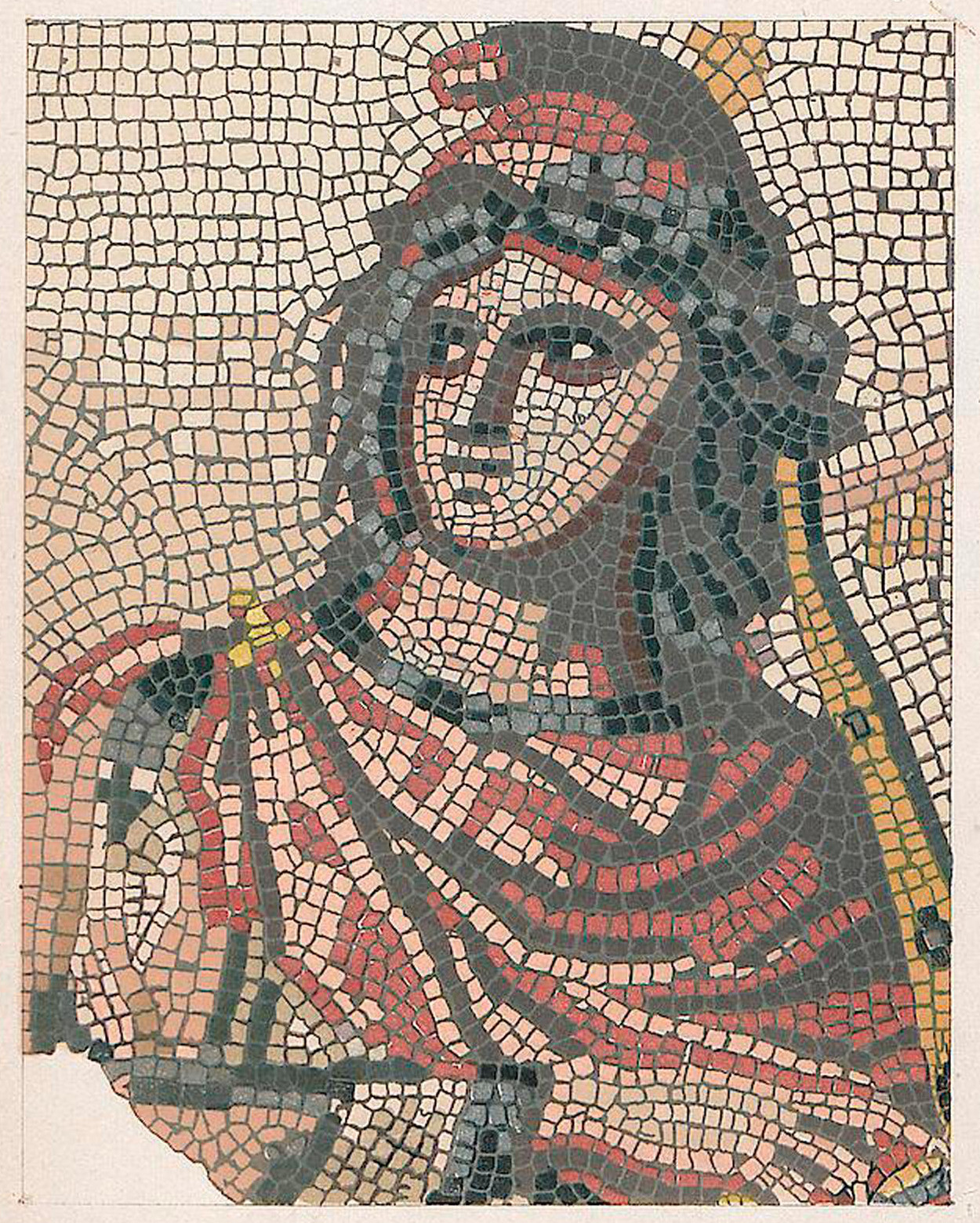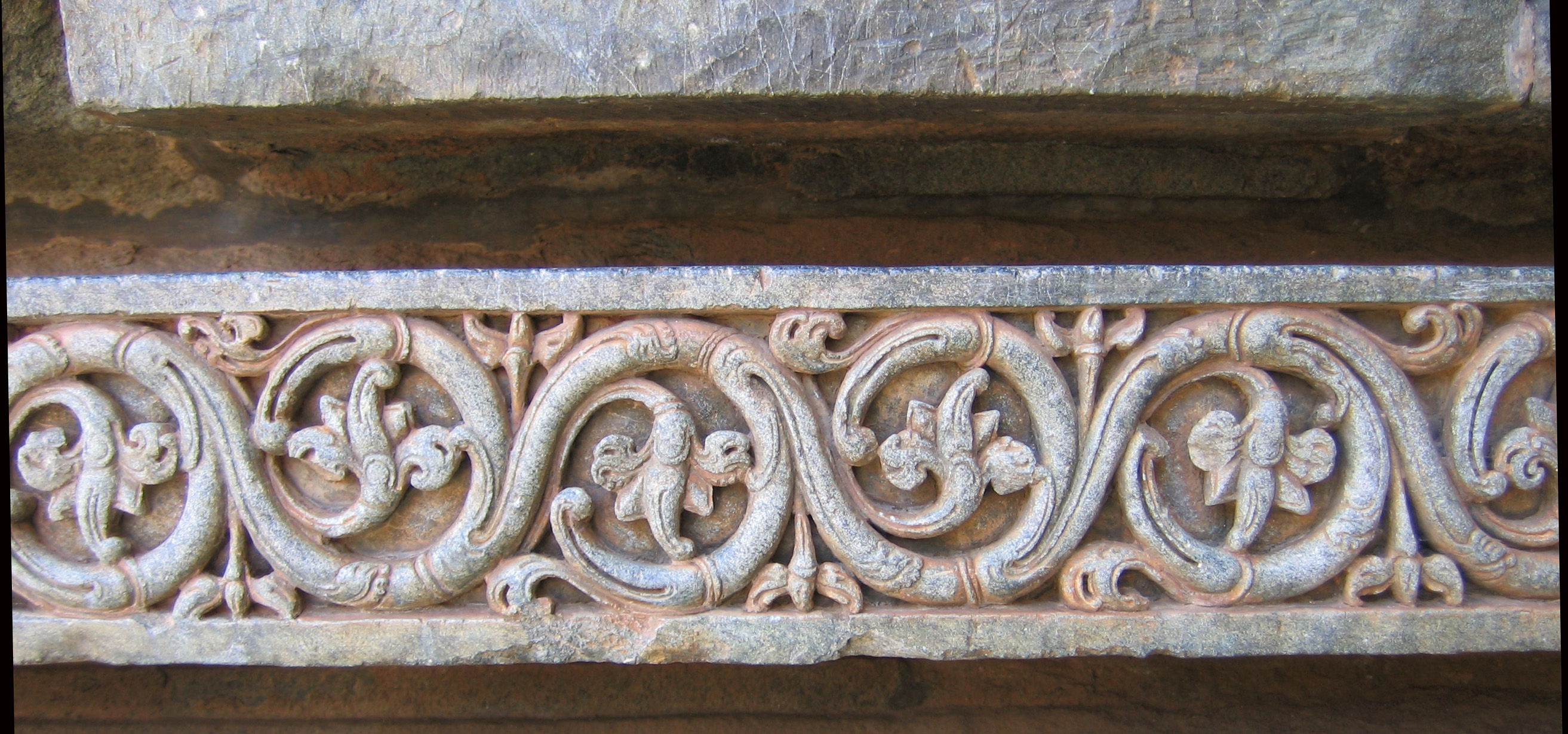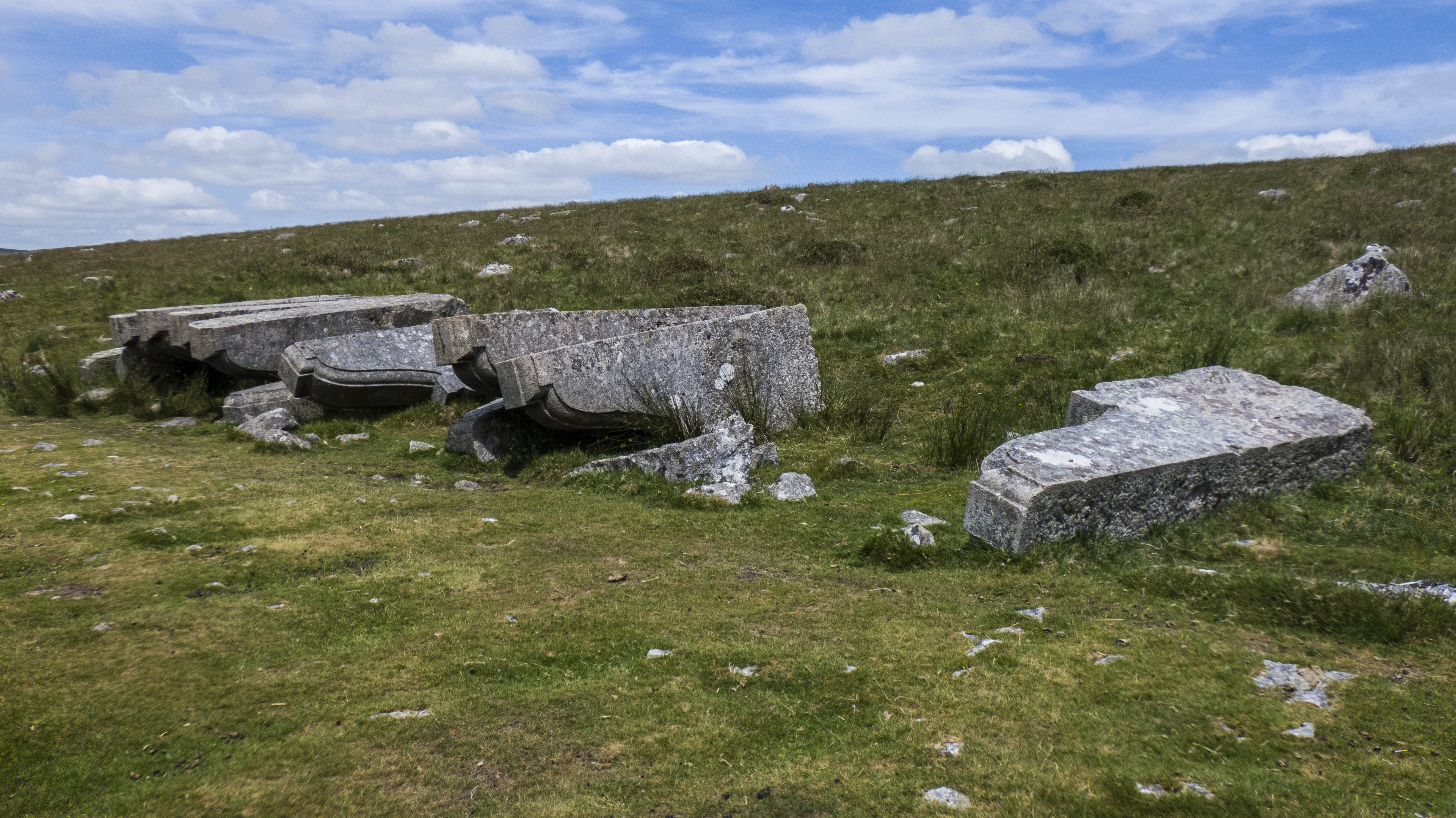|
Camera Degli Sposi
The Camera degli Sposi ("bridal chamber"), sometimes known as the Camera picta ("picture chamber"), is a room frescoed with illusionistic paintings by Andrea Mantegna in the Ducal Palace, Mantua, Italy.. During the fifteenth century when the Camera degli Sposi was painted, Mantua was ruled by the Gonzaga, who maintained Mantua's political autonomy from its much stronger neighbors Milan and Venice by bidding their support out as a mercenary state. By commissioning Mantegna to paint the chamber, Ludovico III Gonzaga, the Marquis of Mantua, sought to give the Gonzaga rule more cultural credibility at a time when other Northern Italian courts such as the Ferrara were commissioning their own “painted chambers”. The Camera is located on the first floor of a northeastern tower in the private section of the Ducal Palace, with windows on the northern and eastern walls, overlooking Lago di Mezzo. This room would have been used for several different private and semi-private functions ... [...More Info...] [...Related Items...] OR: [Wikipedia] [Google] [Baidu] |
Fresco
Fresco ( or frescoes) is a technique of mural painting executed upon freshly laid ("wet") lime plaster. Water is used as the vehicle for the dry-powder pigment to merge with the plaster, and with the setting of the plaster, the painting becomes an integral part of the wall. The word ''fresco'' () is derived from the Italian adjective ''fresco'' meaning "fresh", and may thus be contrasted with fresco-secco or secco mural painting techniques, which are applied to dried plaster, to supplement painting in fresco. The fresco technique has been employed since antiquity and is closely associated with Italian Renaissance painting. The word ''fresco'' is commonly and inaccurately used in English to refer to any wall painting regardless of the plaster technology or binding medium. This, in part, contributes to a misconception that the most geographically and temporally common wall painting technology was the painting into wet lime plaster. Even in apparently '' buon fresco'' technology ... [...More Info...] [...Related Items...] OR: [Wikipedia] [Google] [Baidu] |
Gianfrancesco Gonzaga (1446–1496)
file:Gianfrancesco Gonzaga-Rodigo.jpg, 240px, Portrait of Gianfrancesco Gonzaga Gianfrancesco Gonzaga (1446 – 28 August 1496) was the third son of Ludovico III Gonzaga, Marquess of Mantua and Barbara of Brandenburg, Marquise of Mantua, Barbara of Brandenburg. He was the first Count of Sabbioneta from 1479 until his death, originating the later Princely Gonzaga-Sabbioneta, Gonzaga-Bozzolo, Gonzaga-Gazzuolo and Gonzaga-San Martino lines of the House of Gonzaga, Gonzaga family. Biography He was born in Mantua. in 1478, when his father Ludovico died, the Gonzaga lands between the Po River, Po and Oglio rivers were inherited by his sons cardinal Francesco Gonzaga (1444-1483), Francesco and Gianfrancesco. When Francesco died, the latter became the only lord, adding to them the county of Rodigo. Gianfrancesco chose Gazzuolo as the seat of his court. The town was fortified and later became the seat of a marquisate (1565). He married Antonia Del Balzo, daughter of Pietro Del Balzo, duke ... [...More Info...] [...Related Items...] OR: [Wikipedia] [Google] [Baidu] |
Orpheus
In Greek mythology, Orpheus (; , classical pronunciation: ) was a Thracians, Thracian bard, legendary musician and prophet. He was also a renowned Ancient Greek poetry, poet and, according to legend, travelled with Jason and the Argonauts in search of the Golden Fleece, and descended into the Greek underworld, underworld to recover his lost wife, Eurydice. The major stories about him are centered on his ability to charm all living things and even stones with his music (the usual scene in Orpheus mosaics), his attempt to retrieve his wife Eurydice from the underworld, and his death at the hands of the maenads of Dionysus, who got tired of his mourning for his late wife Eurydice. As an archetype of the inspired singer, Orpheus is one of the most significant figures in the classical reception studies, reception of classical mythology in Western culture, portrayed or allusion, alluded to in countless forms of art and popular culture including poetry, film, opera, music, and painting ... [...More Info...] [...Related Items...] OR: [Wikipedia] [Google] [Baidu] |
Arion
Arion (; ) was a kitharode in ancient Greece, a Dionysiac poet credited with inventing the dithyramb. The islanders of Lesbos claimed him as their native son, but Arion found a patron in Periander, tyrant of Corinth. Although notable for his musical inventions, Arion is chiefly remembered for the fantastic myth of his kidnapping by pirates and miraculous rescue by dolphins, a folktale motif. Origins Arion was a native of Methymna in Lesbos, and, according to some mythological accounts, a son of Cyclon or of Poseidon and the nymph Oncaea. All traditions about him agree in describing him as a contemporary and friend of Periander, tyrant of Corinth. He appears to have spent a great part of his life at the court of Periander, but respecting his life and his poetical or musical productions, scarcely anything is known beyond the story of his escape from the sailors with whom he sailed from Sicily to Corinth. The dithyramb Arion is often called the inventor of the dithyrambic po ... [...More Info...] [...Related Items...] OR: [Wikipedia] [Google] [Baidu] |
Scroll (art)
The scroll in art is an element of ornament and graphic design featuring spirals and rolling incomplete circle motifs, some of which resemble the edge-on view of a book or document in scroll form, though many types are plant-scrolls, which loosely represent plant forms such as vines, with leaves or flowers attached. Scrollwork is a term for some forms of decoration dominated by spiralling scrolls, today used in popular language for two-dimensional decorative flourishes and arabesques of all kinds, especially those with circular or spiralling shapes. Scroll decoration has been used for the decoration of a vast range of objects, in all Eurasian cultures, and most beyond. A lengthy evolution over the last two millennia has taken forms of plant-based scroll decoration from Greco-Roman architecture to Chinese pottery, and then back across Eurasia to Europe. They are very widespread in architectural decoration, woodcarving, painted ceramics, mosaic, and illuminated manuscripts ... [...More Info...] [...Related Items...] OR: [Wikipedia] [Google] [Baidu] |
Corbel
In architecture, a corbel is a structural piece of stone, wood or metal keyed into and projecting from a wall to carry a wikt:superincumbent, bearing weight, a type of bracket (architecture), bracket. A corbel is a solid piece of material in the wall, whereas a console is a piece applied to the structure. A piece of timber projecting in the same way was called a "tassel" or a "bragger" in England. The technique of corbelling, where rows of corbels deeply keyed inside a wall support a projecting wall or parapet, has been used since Neolithic (New Stone Age) times. It is common in medieval architecture and in the Scottish baronial style as well as in the vocabulary of classical architecture, such as the modillions of a Corinthian order, Corinthian cornice. The corbel arch and corbel vault use the technique systematically to make openings in walls and to form ceilings. These are found in the early architecture of most cultures, from Eurasia to Pre-Columbian architecture. A conso ... [...More Info...] [...Related Items...] OR: [Wikipedia] [Google] [Baidu] |
Andrea Mantegna - Ceiling Oculus - WGA14023
Andrea is a given name which is common worldwide for both males and females, cognate to Andreas, Andrej and Andrew. Origin of the name The name derives from the Greek word ἀνήρ (''anēr''), genitive ἀνδρός (''andrós''), that refers to man as opposed to woman (whereas ''man'' in the sense of ''human being'' is ἄνθρωπος, ''ánthropos''). The original male Greek name, ''Andréas'', represents the hypocoristic, with endearment functions, of male Greek names composed with the ''andr-'' prefix, like Androgeos (''man of the earth''), Androcles (''man of glory''), Andronikos (''man of victory''). In the year 2006, it was the third most popular name in Italy with 3.1% of newborns. It is part of the Italian male names ending in ''a'', some others being Elia (Elias), Enea (Aeneas), Luca (Lucas), Mattia (Matthias), Nicola (Nicholas), Tobia (Tobias). In recent and past times it has also been used on occasion as a female name in Italy and in Spain, where it is co ... [...More Info...] [...Related Items...] OR: [Wikipedia] [Google] [Baidu] |
Galeazzo Maria Sforza
Galeazzo Maria Sforza (24 January 1444 – 26 December 1476) was the fifth Duke of Milan from 1466 until 1476. He was born to Francesco Sforza, a popular condottiero and ally of Cosimo de' Medici who would gain the Duchy of Milan in 1450, and Bianca Maria Visconti. He married into the Gonzaga family; on the death of his first wife Dorotea Gonzaga, he married Bona of Savoy. Life Galeazzo Maria Sforza was born in Fermo, near the family's castle of Girifalco. He was the first son of Francesco Sforza and Bianca Maria Visconti. At the death of his father on 8 March 1466, Sforza was in France heading a military expedition to help King Louis XI against Charles I of Burgundy. Called back home by his mother, Sforza returned to Italy under a false name. The false identity was necessary as he had to pass by the territories of the family's enemy, the Duke of Savoy, who made an unsuccessful attempt on Sforza's life. He entered Milan on 20 March 1466, and was acclaimed by the ... [...More Info...] [...Related Items...] OR: [Wikipedia] [Google] [Baidu] |
Christian I Of Denmark
Christian I ''(Christiern I)'' (February 1426 – 21 May 1481) was a German noble and Scandinavian monarch under the Kalmar Union. He was king of Denmark (1448–1481), King of Norway, Norway (1450–1481) and King of Sweden, Sweden (1457–1464). From 1460 to 1481, he was also duke of Schleswig (within Denmark) and count (after 1474, duke) of Duchy of Holstein, Holstein (within the Holy Roman Empire). He was the first king of the House of Oldenburg. In the power vacuum that arose following the death of Christopher of Bavaria, King Christopher without a direct heir in 1448, Sweden elected Karl Knutsson king with the intent to reestablish the union under a Swedish king. Karl was elected king of Norway in the following year. However the House of Schauenburg, counts of Holstein made the Danish Privy Council appoint Christian as king of Denmark. His subsequent accessions to the thrones of Norway (in 1450) and Sweden (in 1457) restored the unity of the Kalmar Union for a short ... [...More Info...] [...Related Items...] OR: [Wikipedia] [Google] [Baidu] |
Frederick III, Holy Roman Emperor
Frederick III (German language, German: ''Friedrich III,'' 21 September 1415 – 19 August 1493) was Holy Roman Emperor from 1452 until his death in 1493. He was the penultimate emperor to be Coronation of the Holy Roman Emperor, crowned by the pope, and the last to be crowned in Rome. He was the fourth King of the Romans and the first Holy Roman Emperor from the House of Habsburg, which was to retain the title with one gap until it was declared at an end by Francis II, Holy Roman Emperor, Emperor Francis II, in 1806. Prior to his imperial coronation, he was duke of the Inner Austrian lands of Duchy of Styria, Styria, Duchy of Carinthia, Carinthia and Duchy of Carniola, Carniola from 1424, and also acted as regent over the Duchy of Austria from 1439. He was imperial election of 1440, elected and crowned King of Germany in 1440. His reign of 53 years is the longest in the history of the Holy Roman Empire or the German monarchy. Upon his death in 1493 he was succeeded by his son Max ... [...More Info...] [...Related Items...] OR: [Wikipedia] [Google] [Baidu] |
Holy Roman Emperor
The Holy Roman Emperor, originally and officially the Emperor of the Romans (other), Emperor of the Romans (; ) during the Middle Ages, and also known as the Roman-German Emperor since the early modern period (; ), was the ruler and head of state of the Holy Roman Empire. The title was held in conjunction with the title of King of Italy#Kingdom of Italy (781–962), King of Italy (''Rex Italiae'') from the 8th to the 16th century, and, almost without interruption, with the title of King of Germany (''Rex Teutonicorum'', ) throughout the 12th to 18th centuries. The Holy Roman Emperor title provided the highest prestige among Christianity in the Middle Ages, medieval Catholic monarchs, because the empire was considered by the Catholic Church to be Translatio imperii, the only successor of the Roman Empire during the Middle Ages and the early modern period. Thus, in theory and diplomacy, the emperors were considered first among equalsamong other Catholic monarchs across E ... [...More Info...] [...Related Items...] OR: [Wikipedia] [Google] [Baidu] |
Francesco Gonzaga (1444–1483)
Francesco Gonzaga (15 March 1444, Mantua, Italy – 21 October 1483, Bologna, Italy ) was an Italian bishop and a Cardinal of the Roman Catholic Church during the reigns of Popes Pius II, Paul II and Sixtus IV. Background Born in Mantua on 15 March 1444, Francesco Gonzaga was the second son of Ludovico III Gonzaga, the second Marquis of Mantua, and his wife Barbara of Brandenburg. His mother was the daughter of John, Margrave of Brandenburg-Kulmbach and Barbara von Sachsen-Wittenberg, and the niece of Emperor Sigismund of the Holy Roman Empire. His first education was in the "Ca' Giocosa" under Iacopo da San Cassiano, Ognibene da Lonigo, and Bartolomeo Platina. After completing his studies at Padua, Francesco went to the University of Pisa. After he graduated, he was appointed by Pope Nicholas V to the offices of prothonotary apostolic in February 1454 and later of the Procurator of the Church for Mantua. Although he had chosen an ecclesiastical career, he led a m ... [...More Info...] [...Related Items...] OR: [Wikipedia] [Google] [Baidu] |









